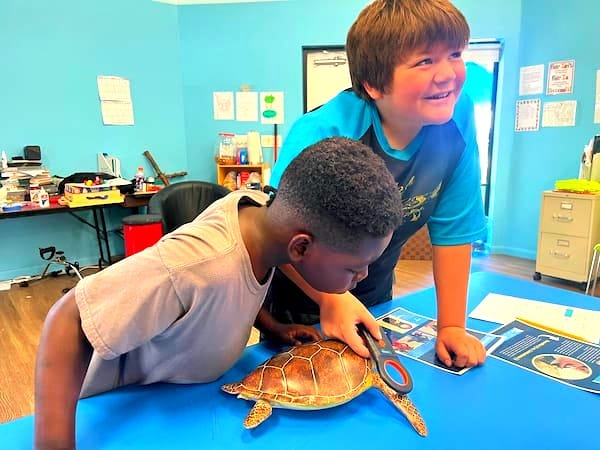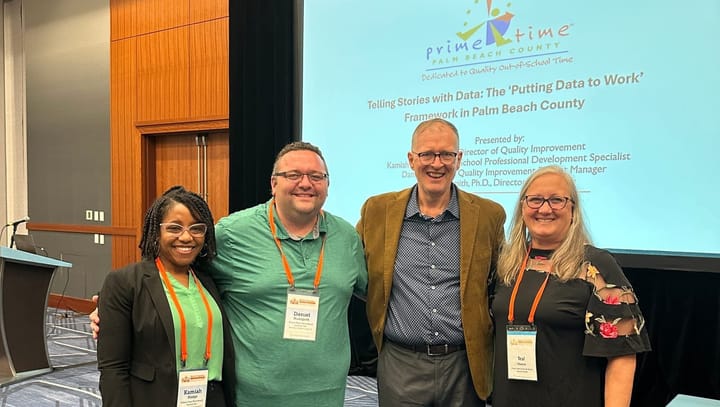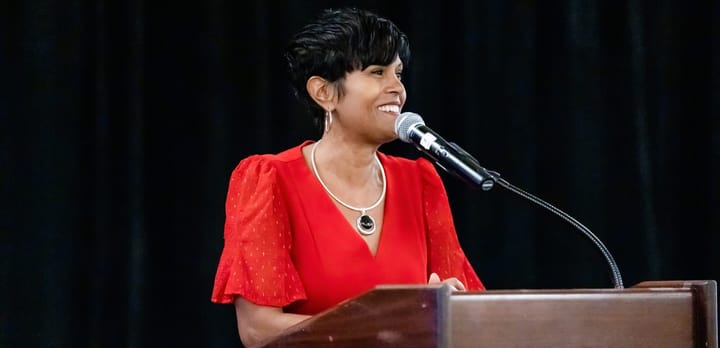Launching a Social and Emotional Learning Initiative
Guest Blog
Written by Ally Margolis, Policy and Communications Manager,
Every Hour Counts
Our country’s compounding crises have magnified the importance of supporting children socially and emotionally. Amidst a global pandemic, systemic racial inequity, and record-breaking unemployment, developing social and emotional learning (SEL) skills such as resilience and self-regulation can pull people through these treacherous times.
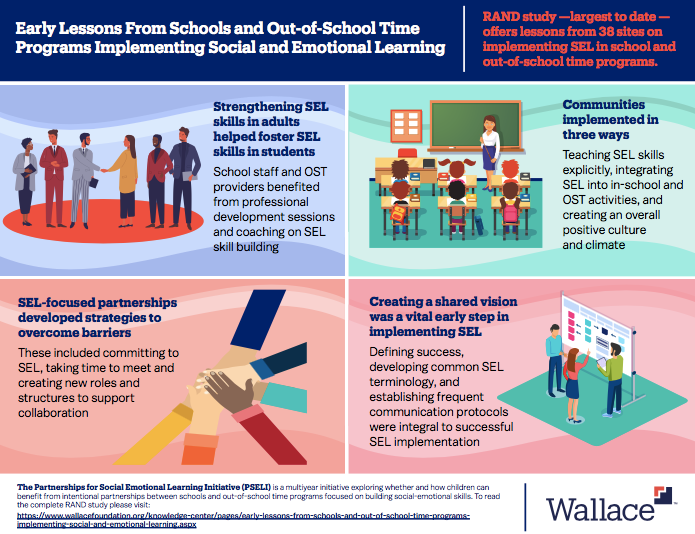
At the helm are out-of-school time (OST) intermediaries, community-based organizations, and school districts, partnering to mobilize resources and supports to respond to young peoples’ social, emotional, and academic needs. School-day and OST leaders and educators are navigating rapidly shifting contexts; engaging students in a range of hybrid, remote, and socially-distanced settings; and helping young people through new or heightened challenges — food insecurity, grief, isolation, and trauma, to name a few.
The RAND Corporation’s recent report, Early Lessons from Schools and Out-of-School Time Programs Implementing Social and Emotional Learning, commissioned by The Wallace Foundation, comes at a time when SEL insights are not only in high demand, but can be game-changers for the recovery of our educational ecosystem.
At the heart of the initiative lies a key question, “If urban schools and their afterschool partners work together to improve and align experiences and climate to foster children’s social emotional learning, will students benefit — and what does it take to do this work?”
This comprehensive report shares lessons and findings from the Partnerships for Social Emotional Learning Initiative (PSELI) — a multiyear initiative launched by The Wallace Foundation in 2016 — to build bridges between six school districts and their local afterschool intermediary organizations to develop children’s SEL skills in and beyond the classroom.
Six communities — Boston, MA; Dallas, TX; Denver, CO; Palm Beach County, FL; Tacoma, WA; and Tulsa, OK — set out to answer this question, implementing four key elements in their approach:
1. Develop partnerships at the system level (school districts and out-of-school time intermediaries) and site level (school sites and OST programs);
2. Develop a positive culture and climate;
3. Offer explicit SEL instruction; and
4. Integrate SEL into academic instruction and OST activities.
Every Hour Counts spoke with out-of-school time intermediary leaders from each of the PSELI communities to learn about their experiences collaborating with school districts to launch SEL initiatives for elementary school-aged children.
Christina Hanger, CEO, Dallas Afterschool, TX
Fahren Johnson, Senior Program Officer, Greater Tacoma Community Foundation, WA
Lauren McCabe, Assistant Director of Social & Emotional Learning, Boston After School & Beyond, MA
Celine Provini, Director of Research, Prime Time Palm Beach County, FL
Maxine Quintana, City Lead and Co-Founder, Denver Afterschool Alliance, CO
Byron Sanders, President and CEO, Big Thought, Dallas, TX
Caroline Shaw, Executive Director, The Opportunity Project, Tulsa, OK
Which of the lessons from Early Lessons from Schools and Out-of-School Time Programs Implementing Social and Emotional Learningis most critical to sustaining your intermediary’s SEL work moving forward?

Byron Sanders: The most important lesson for us was developing a common language for SEL that builds shared understanding of the terminology among school and OST staffers. Once we began speaking the same language, we could more cogently develop a shared vision. When we’re aligned in what we mean when we say “SEL,” then we can be more nimble, efficient, and coherent as we expand the message and practices to more stakeholders.
Maxine Quintana: Without question, “developing adults’ capacity to promote SEL” has been critical to our success. Turnover in the OST world is real and we have created a comprehensive professional learning series that addresses this reality. Grounded in Relationships, Planning and Presence, this series provides a space for staff to build their own SEL skills and sets them up for success as they begin working with young people.
Lauren McCabe: We’ve learned the importance of making SEL visible in order to sustain our SEL work and the partnerships that make this work possible. By making SEL “visible,” rather than just “linking” SEL to our programming and professional development, we can point out the specific brushstrokes in the painting when talking about SEL implementation.
Launching and coordinating SEL work across multiple program sites, in collaboration with a school district, is complex. What criteria should an OST intermediary use to determine its readiness to work with a school district around SEL?
Fahren Johnson: We found the most important elements for determining readiness to be:
● Shared vision and leadership: Partners should create a shared vision for what families, youth, educators, and youth development professionals want; identify common outcomes to help achieve this vision; and clarify roles and responsibilities so that decision-making is a shared effort.
● Aligned, responsive SEL-Equity infused implementation: Use data; diversity, equity, and inclusion; and quality to identify community needs and disparities and respond in ways that align these needs with partners’ services.
● Shared accountability for success: Build observation that is not evaluative into your programming to promote cycles of continuous improvement.

Celine Provini: In Palm Beach County, we learned that both district and intermediary partners should:
● Embrace the importance of OST for student success in school, work and life;
● Envision similar models and dosages of staff training and coaching, as well as expectations for incremental SEL implementation;
● Overcome scheduling challenges between school day and OST staff; and
● Have a history of successful conflict resolution, compassion, and a willingness to “reboot” relationships when needed.
Maxine Quintana: This work, at its core, is all about relationships. Each intermediary should begin by identifying and cultivating relationships with champions at all levels within the school district that can move the partnership forward. Internally, do an audit of your own strengths and resources so that the district knows what you bring to the partnership. For example, if your intermediary has a strength around professional learning, think about how you can leverage that as a resource to support the district’s needs.
Which aspects of building and maintaining a deep, long-term district-OST intermediary partnership proved more challenging than you anticipated and how did you mitigate these challenges?
Fahren Johnson: Aligning to a district data system is the most challenging aspect because it requires collaboration from specific district departments to ensure data sharing is safe, allows in- and out-of-school time staff to agree upon the data needed to support both spaces, and provides opportunities to braid resources. We mitigated these challenges by asking essential questions such as, “Who is going to own the data?” and “ Who needs to be involved in creating the data agreements?” We also involved youth, providers, and parents in the data platform design process to authentically build it with our community in mind.
Celine Provini: Prime Time and the school district had a long history of successful partnership, but PSELI, an initiative more complex than previous projects, tested our limits. A very large district and a small intermediary meant different organizational cultures and operating styles. It took us a while to understand what true partnership and shared vision — as opposed to simply “parallel play” — looks like. In year two of the project, we engaged a professional facilitator/coach, who was critical in improving partner communication and re-energizing our mutual work. Joint messaging to PSELI school sites, as well as planning joint trainings and events, also proved especially challenging. To remain in sync, we learned that we needed to communicate almost daily, have frequent “operational” meetings, establish detailed protocols and plans and turn toward (rather than away from) each other when things got tough.
Byron Sanders: It’s always going to take longer than you think — plan for it to be challenging and take time. It’s crucial to have strong point leadership at the district and the intermediary, but if the other key players who have to make this happen aren’t as vested in the partnership between organizations, it can make what are simply issues to figure out become significant impediments to progress. You solve these by creating ongoing and intentional space for feedback about not just the tactics of the project, but the state of the partnership. In true SEL fashion, taking time to “check-in” with each other, to get a pulse of the feelings about the relationships, really matter. Agreeing to regularly create that space helps forge an environment where we can navigate the complexity and still do so from the same side of the table.
Caroline Shaw: Site-level relationships, principal buy-in, and power imbalances were the most challenging parts of building sustainable partnerships. Yet with all of these challenges, we understood that building connection and trust between school-day and OST teams was critical. Through a variety of mechanisms including shared professional development, co-leading meetings, site tours, and joint participation in mini-grants, we built intentional connections and relationships, knitting together the in-school and OST worlds for the benefit of young people.
What advice do you have for other communities on designing initiatives that strengthen district and intermediary and school and OST partnerships?
Christina Hanger: Be patient. Put in the time on the basics, such as educating all staff on the importance of SEL in their own lives and practices and how this impacts children. It takes time before you can see progress and change in children’s resilience.
Fahren Johnson: Ensure time is spent not only on design and implementation, but on re-visiting initial goals, being open to pivot, and trying something new. Also, include community, student, and parent voice as much as possible.
Lauren McCabe: Ground the work in equity. Our shared goal is for learning and skill-building to happen year-round, across the city, so that students’ experiences and skills support them throughout their lives. The goal of structural inequity, on the other hand, is to prevent a thriving future for all students, so our initiatives must work intentionally to dismantle such inequity.
Celine Provini: It is harder than you think, but you are more capable than you know. Allow time to reflect upon and re-evaluate what is and isn’t working. Cultivate patience and flexibility and treat your partners — and partnerships — with care. Keep a journal of successes you experience (no matter how small) and document pivots you made to keep things moving forward. Review these periodically to motivate yourself over the long haul, and pass these lessons learned onto others when it comes time to scale your approach.
Maxine Quintana: This work is centered on the relationships we form, so the question becomes, “How can we strengthen our relationships with our district partners?” While there are many ways to do this, it starts with creating a shared vision, common goals, and agreement for how decisions are made. From deciding on a SEL curriculum to developing a professional learning series, both partners should have a seat at the table. We also suggest spending the necessary time understanding each other’s organizational philosophy are overall goals so that the aligned vision you create for the partnership will have real meaning in both organizations.
Byron Sanders: Alignment is key. Every stakeholder has to believe that this is for the good of youth and adults who’d be participants and beneficiaries. There are so many tools, best practices, research that all of us can get access to. The work is the partnership — making sure that the connections, relationships, and processes that define how you all move together is the thing.
Caroline Shaw: Show up and participate! Be ready to support district needs and initiatives:
● Do you have OST data that can support district efforts? Do you have partners within your network who can support? Make sure partners are included in district committees and planning groups and likewise, involve district teams in your intermediary’s planning work.
● Develop relationships throughout the district, at all levels, to help build a foundation for future collaboration and ensure OST bright spots and wins are lifted up to the district.
How has your intermediary changed for the better as a result of your PSELI participation?
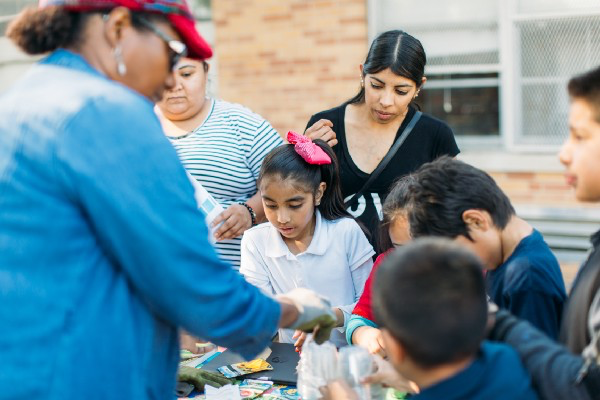
Celine Provini: Prime Time has long championed SEL. PSELI gave us the opportunity to deepen this commitment by including more SEL signature practices in meetings and events; adding an SEL specialist to our staff to improve the quality of our programming, coaching, and observation process; enhancing staff self-care practices; and increasingly viewing our work through an equity lens.
Maxine Quintana: Without a doubt, the most immediate and visible impact within DAA is that we have infused social emotional learning into all aspects of our work. If you look at the way we structure meetings, or how we developed our professional learning calendar, or even how we evaluate the impact of our efforts, you will see social emotional learning.
Byron Sanders: We’ve seen our increased capacity for SEL implementation amplify our fitness to dive deeper into equity — both within our own organization and in new program design for our youth. Strong social-emotional acumen, we’ve discovered, is a core trait to becoming the kind of racially equitable organization that can partner even more authentically with the diverse communities we serve.
Thank you to Byron, Caroline, Celine, Christina, Fahren, Lauren, and Maxine for sharing your lessons learned with us. Special thanks to Celine for informing the development of this blog.
For more information on planning your social and emotional learning initiative, see the report, Early Lessons from Schools and Out-of-School Time Programs Implementing Social and Emotional Learning.
To learn more about Every Hour Counts and the work of our coalition, visit their website and follow them on Medium and Twitter.

